It is that spasm that shoots down the back of your leg from your hip.
It is the pain that radiates down your hamstring.
It is the numbness that reminds you something is wrong.
It is the hip pain when sitting.
No matter what way you look at it, when you have piriformis pain while running, it can be very frustrating.
You can get to the point if you wonder if you will ever be able to run pain free again?
If you were following a marathon training schedule, this can be devastating.
How am I going to run 26.2 miles if I cannot do my marathon training without my piriformis muscle hurting me when I run?
We have been there.
All the research in the world about piriformis syndrome symptoms, and the quest for the best piriformis stretch to ease your glute pain does not seem to be helping, but rather than looking at forums where others talk about their individual experiences for the pain in their butt muscles, how about you let us help you by looking at the science behind it, so you can understand what is going on, start using the right piriformis exercises to get you on your way to recovery.
For good this time.
We are going to show you the signs, symptoms, tests, and piriformis syndrome treatment to make sure you can say you used to suffer from piriformis pain, rather than you do.
Do you want to know why it is so important?
The piriformis is a small, relatively short, and little-known muscle buried deep within the muscle tissue in your hips.
In each hip, it runs from the back of your pelvis to the top of your femur. Because of its unique positioning, the piriformis muscle helps rotate your leg outward when your hip is extended, but rotates your leg inward and into abduction when your hip is flexed.
When running, the piriformis is most active during the “stance” phase, where your foot is planted on the ground. Here, it acts as an external rotator of the leg, but it is neither the primary nor the most powerful muscle which acts in that role.
Despite its seemingly insignificant function in the muscular support of your body while running, it plays a central role in a complicated and frustrating injury known as piriformis syndrome.
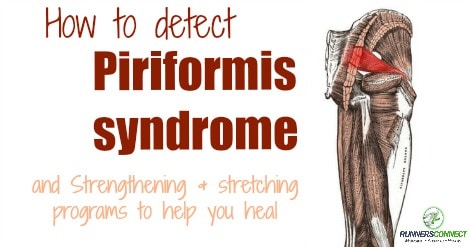
Why is Piriformis Syndrome Worse than Other Injuries?
Your piriformis is positioned immediately adjacent to the sciatic nerve, a very thick nerve which runs from the base of your spine along your glute muscles and down the back of your legs, providing the nerve signals that allow all of the muscles on the back side of your lower body to fire when needed.
Did you know this?
When the piriformis muscle is irritated, the sciatic nerve can get irritated too.
In around fifteen percent of people, the sciatic nerve actually passes through the piriformis, which, according to some researchers, leaves these individuals more susceptible to piriformis syndrome.
Classically, piriformis syndrome feels like an aching, soreness, or tightness in your butt, between the back of your pelvis (the sacrum, specifically) and the top of your femur.
- Pain, tightness, tingling, weakness, or numbness can also radiate into your lower back and down the back side of your leg, through your hamstrings and calves.
- Buttock pain and tightness with prolonged sitting is also a common occurrence with piriformis syndrome.
- When you run, you will probably feel pain in your butt throughout the stance phase of your stride; the pain might get worse when you run fast, go up and down hills, or go around tight turns.
Piriformis syndrome is related to sciatica, a painful irritation which also involves pain, tightness, weakness, and a numb or tingling sensation than courses down from your lower back into your butt, hamstring, and calves or even feet.
This is crazy:
How the piriformis muscle and the sciatic nerve relate to piriformis syndrome and sciatica-like pain is something that even doctors and researchers can’t quite agree on.
Their interactions are complicated, as there can be many causes of buttock pain and sciatic nerve pain.
The mere existence of a “piriformis syndrome” has even been questioned, but the most current research and review papers accept that piriformis syndrome represents a real phenomenon that is responsible for buttock and lower leg pain.
What are piriformis syndrome symptoms?
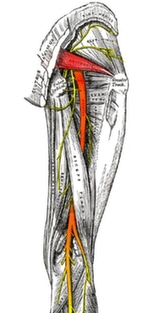
It is very important to distinguish piriformis syndrome from other problems that can cause similar symptoms in the buttock and leg.
A herniated disc in your lower back, for example, can put pressure on the sciatic nerve, causing the same type of pain that radiates down the back side of your leg, as can spinal stenosis (a narrowing of the canal where your spinal cord passes through) and a host of other pelvic and lower back issues.
Here’s the deal:
Though there are no universally agreed-upon criteria for piriformis syndrome, a comprehensive review paper published in 2010 by Kevork Hopayian and other doctors at the University of East Anglia in the UK provides useful criteria.
In their study, they defined piriformis syndrome as “sciatica [i.e. musculoskeletal pain in the leg] arising from pressure on the sciatic nerve trunk or its branches by the PM [piriformis muscle] or disorders involving the muscle.”
This definition is useful as it encompasses both sciatica-like pain radiating down through the hamstrings that is likely the result of pressure on the sciatic nerve, as well as localized pain and soreness in the piriformis muscle itself.
Hopayian et al. also outlined the four most common findings in patients with piriformis syndrome among the 55 studies they examined:
- Pain in the buttock/piriformis region
- Tenderness at a specific spot in the pelvis between the sacrum and the top of the femur—the area the piriformis muscle runs through.
- Worsening of buttock and sciatica-like pain with prolonged sitting
- Aggravation or alteration of the pain when the hip and leg are positioned to put tension on the piriformis muscle
While these symptoms are definitely evident in people with piriformis syndrome, it’s unclear how common they are in people with non-piriformis-related sciatica, so its diagnostic usefulness is somewhat limited.
Fortunately:
Other conditions that can cause similar symptoms can be identified by objective medical tests like an MRI or a CT scan—these can check for herniated discs or other low back and pelvis issues.
If these tests come back clean, piriformis syndrome can be considered as a cause.
Piriformis syndrome tests
There are also a few specific tests for piriformis syndrome that have been highlighted in scientific studies.
The straight-leg raise test
Pain will shoot down the back of your leg when your leg is raised straight (typically by a partner) while you lie on your back. This is indicative of irritation of the sciatic nerve, though it is not specific to piriformis syndrome.
The straight-leg raise test can cause sciatica-like pain if you have piriformis syndrome, but might also indicate the presence of low back problems
Knees against resistance test
This test can be performed while sitting.
Attempt to push your knees out against resistance (provided by a partner or rope). If this causes pain, piriformis syndrome is likely.
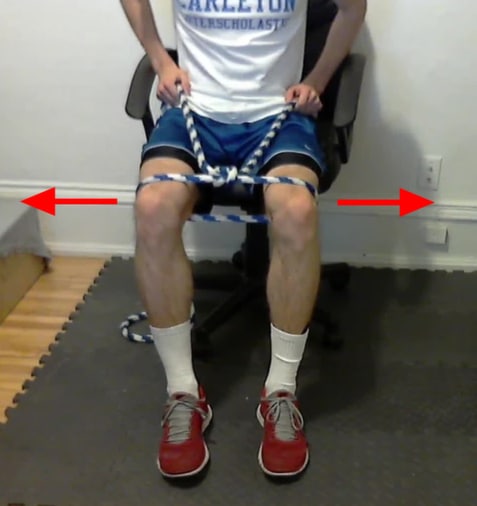
Pain might also occur if you attempt to abduct your hips from a sitting position against resistance provided by a partner or a rope.
Piriformis stretch test
Finally, two maneuvers which put a stretch on the piriformis muscle can also be used to test for piriformis pain.
Having a partner rotate your hip and leg inwards while you lie on your back with your knees straight can produce pain, as can lying on your unaffected side and rotating the painful side across your body with your knee bent.
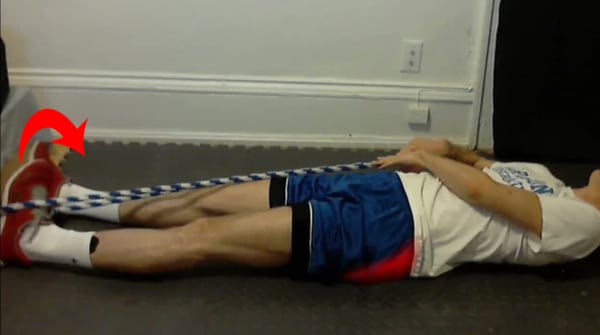
One test which can produce piriformis-specific pain is a supine internal leg rotation, assisted by either by a partner or a rope, as illustrated here.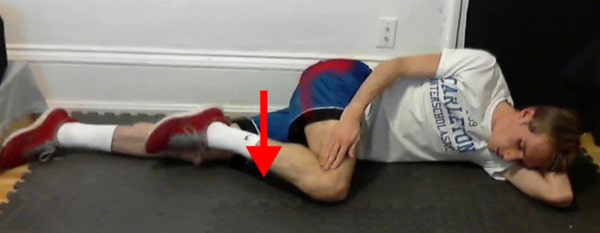
Stretching the piriformis in this position can elicit pain (red area) if you have piriformis syndrome
Though these piriformis-specific tests can help confirm the presence of piriformis syndrome, they are not accurate enough to rule it out.
But here’s the kicker:
Hopayian et al.’s review study found no one technique to be reliable or accurate enough to endorse; rather, they cited the more general symptom of aggravation or modulation of piriformis pain when you stretch or tension the piriformis muscle.
You might also be able to feel a thickening in the piriformis muscle itself, deep within your glutes, but this is also not enough by itself to definitively diagnose piriformis syndrome.
Piriformis Syndrome Treatment
As you might have been able to guess from the ambiguity of the symptoms and diagnosis criteria, piriformis syndrome is not a heavily-studied injury, in runners or even in the population at large.
Even case studies of piriformis syndrome in athletes are extremely difficult to come by, so our approach to treatments will have to rely more heavily on a theoretical approach versus one backed by high-quality clinical trials.
Most treatments for piriformis syndrome that are recommended in scientific literature are focused on addressing the painful or irritated piriformis muscle that’s (presumably) the cause of the buttock and leg pain.
This largely consists of stretching and strengthening exercises.
Case studies and case series articles from the scientific literature recommend using several different stretches for the piriformis.
Based on what we know about the anatomy of the piriformis muscle, we can come up with ways to stretch it—if, when the hip is in flexion, the piriformis acts as an internal rotator and abductor, we can stretch it by putting our hip into external rotation and adducting it.
The best piriformis stretch (that actually works!)
This is exactly what is accomplished in the stretches recommended by Douglas Keskula and Michael Tamburello in a 1992 article on treatments for piriformis syndrome.
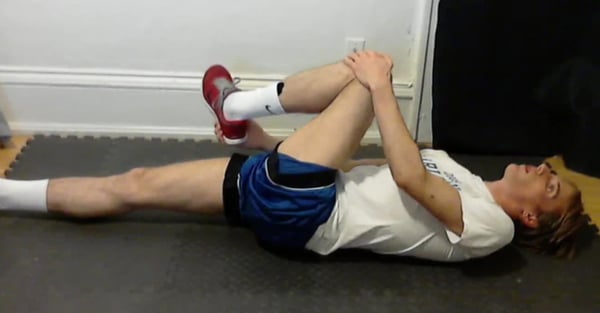
Supine piriformis stretch with a crossover (moving left knee towards right shoulder)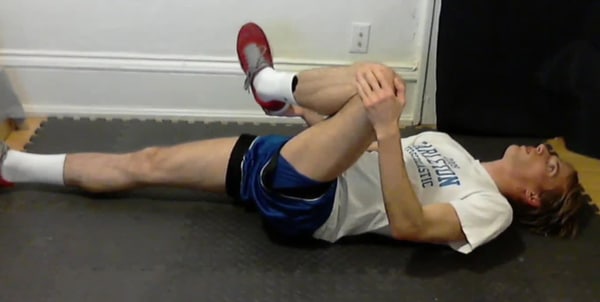 ,
,
Supine piriformis stretch without a crossover (moving heel towards right shoulder)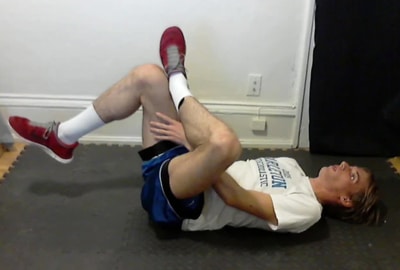
Supine piriformis stretch assisted by opposite leg (moving right knee towards right shoulder)
Keskula and Tamburello recommend starting with three sets of five to ten repetitions of each stretch two or three times per day.
Though Keskula and Tamburello only vaguely describe how long each stretch should be held (progressing “as tolerated” by the athlete), another paper by Pamela Barton at the University of Western Ontario in Canada recommends beginning with holding stretches for five seconds and gradually progressing over time to 60 seconds.
This is important:
You should be gentle with the stretches, not overly aggressive—this may put too much stress on the already-irritated piriformis.
RunnersConnect Insider Bonus
Download our Top 5 exercises to prevent piriformis injuries inside your Insider Members area.
It’s a PDF with images and descriptions of the 5 most effective prevention and rehab exercises for runners with Piriformis issues.
Piriformis exercises
Strengthening exercises are also recommended in several different scientific papers.
As the piriformis works as an abductor and rotator of the hip, strengthening both the piriformis itself and the other hip muscles that surround it is a primary goal of treatment.
A 2010 case report by Jason Tonley and a group of fellow physical therapists describes in detail a strengthening protocol used to successfully treat piriformis syndrome in a 30-year-old recreational athlete who displayed many of the classic signs of poor hip muscle coordination: inward knee rotation during single-leg squats and poor hip abduction and external rotation strength.
To address this, the authors prescribed a 14-week, three step program for hip muscle rehabilitation.
- The first phase consisted only of glute bridges and clamshell leg lifts, both using a theraband for resistance.
- After four weeks, the patient progressed to weight bearing exercises: standing mini-squats (with a theraband), “monster walk” side steps (also with a band), a “sit-to-stand” exercise, and single-leg mini-squats.
- Following four weeks of the second phase, the patient progressed to lunges, deep squats, and even plyometric-style hops and landings (with the intent to prepare him to return to basketball and tennis, his principle sports).
In all phases of rehab, the patient progressed over time to three sets of fifteen repeats of each exercise.
While the rehab program in Tonley et al. was immensely successful with their patient, a case report obviously isn’t as useful as a randomized clinical trial.
It’s unclear how useful this program would be for other athletes with piriformis syndrome, but given the lack of high-quality studies, and the dearth of research on treatments specifically for athletes, Tonley et al.’s program is still a pretty good place to start.
Consider this:
Combining these strength exercises with the stretches described above should address both muscular weakness and tightness.
Other research on piriformis syndrome has focused on treatments for more stubborn cases.
Is this you?
Some isolated studies describe injections into the piriformis muscle, either of a local anesthetic like lidocane or of a corticosteroid. Studies indicate that pain relief from injections is highly variable, with some patients experiencing long-lasting relief, and others getting none at all.
You won’t believe this:
Some newer trials have even investigated BOTOX injections (the muscle-paralyzing drug better-known for its use in cosmetic surgery) for treating recalcitrant piriformis syndrome.
Given how little is known about injectable treatments for piriformis syndrome, especially considering that none of the studies on this topic involved athletes, it’s hard to draw any concrete recommendations—these options are something you should discuss with your doctor.
Looking for a last resort?
Surgical release of the piriformis muscle has also been described in multiple papers as a last-resort treatment for piriformis syndrome. As with injectable treatments, studies on surgical patients invariably focus on sedentary people, often with additional existing back or spine problems, so it’s nearly impossible to extract any information useful to a runner. Again, talk to a trusted doctor if you are considering surgery.
Other Piriformis Syndrome Treatment Options
Though there’s not much in the literature about treating piriformis syndrome in runners, it occurs commonly enough for several “folk treatments” and workarounds to have emerged. Among these are:
- Having a massage or stretching out the piriformis muscle and reduce tightness. One way many runners do so is by rolling their glute muscles on a tennis ball or a lacrosse ball (perfectly shaped to put controlled pressure on the glute area).
- Deep tissue massage techniques like Active Release Technique (ART) and Graston Technique are also popular, and they may well accomplish the same goal as the “myofascial release” massage techniques that are described in some case studies by physical therapists.
- Another popular method to address piriformis syndrome is to simply avoid doing things that irritate the piriformis muscle: prolonged sitting in particular can be very irritating, so modifying your routine so you don’t need to sit as often or for as long can be helpful.
- Standing desks are becoming more popular, and taking a short break every hour or so allows you to get your piriformis stretches in, too. If nothing else, experimenting with different sitting surfaces (harder, softer, flatter, or more contoured) might also reduce irritation.
- If you are still able to do some running, avoiding workouts or conditions which irritate your piriformis will also help—common culprits include high speeds, uphills and downhills, and tight turns.
Of course, it goes without saying that none of this is supported by scientific research, so you’ll have to experiment with what works for you and what does not.
Piriformis syndrome treatment for those who have tried everything else
These are treatments with more cost and less certainty about outcomes, but may prove useful when you are fed up of your pain.
Working with a physical therapist to develop a specialized rehab program
Because the literature is so sparse on appropriate exercises for treating piriformis syndrome in runners, it might make sense to see a PT if your case is particularly troublesome or long-lasting.
That way, you can address any aspects of your own individual muscular tightness or weakness that might contribute to your injury.
You can find out if your state offers direct physical therapy treatment here.
Active Release Technique or Graston Technique
These soft tissue mobilization exercises don’t have any support in the scientific literature, but have been praised anecdotally by some, though not all, runners with piriformis syndrome.
Injections of a local anesthetic, corticosteroid, or BOTOX
If you have a recalcitrant case of piriformis syndrome that has not responded to many months of conservative rehab, you can talk to your doctor about an injectable treatment.
If all else fails, surgery is a final alternative. This is also something you should consult with a trusted doctor about.
Cross Training While Injured and During Recovery
Cross training is recommended while you're injured and as you slowly return to running.
The best form of cross training for this injury is Aqua Jogging. Studies have shown that aqua jogging can enable a well-trained runner to maintain running fitness for up to 4-6 weeks.
Aqua jogging is a form of deep water running that closely mimics the actual running movement. Your feet don’t actually touch the bottom of the pool, so it is zero impact and safe for almost any type of injury. In my experience, the only time to avoid aqua jogging is when you have a hip flexor injury, which can be aggravated by the increased resistance of the water as you bring your leg up. Because aqua jogging closely mimics natural running form, it provides a neuromuscular workout that, in addition to aerobic benefits, helps keep the running specific muscles active. The same can’t be said for biking and swimming. The only downside to aqua jogging is that you need a pool that is deep enough to run in without touching the bottom. If you’re lucky enough to have access to a pool of this size, aqua jogging should be your first cross training choice.In one study, a group of ten runners trained exclusively with deep water running for four weeks and compared 5km race times pre deep water running and post deep water running.
The researchers found no statistical difference in 5k time or other markers for performance, such as submaximal oxygen consumption or lactate threshold.
In a second study, researchers measured the effects of aqua jogging over a six week period.
This time, 16 runners were separated into two groups – one who did aqua jogging workouts and the other who did over land running.
Using the same training intensities and durations, the researchers found no difference between the groups in maximal blood glucose, blood lactate, and body composition.
It get’s better:
Research has also demonstrated that aqua jogging can be used as a recovery tool to facilitate the repair of damaged muscles after hard workouts.
These findings make aqua jogging an important recovery tool in addition to being the best cross training method for injuries.
Need one more reason?
The calories burned aqua jogging are even higher than running on land, so if you want to avoid weight gain while you take time off from running, this is definitely the exercise for you!
Aqua Jogging Workouts For Runners
If you're interested in aqua jogging to rehab your injury, then the absolute best way is to use one of my favorite programs, Fluid Running.
First, it comes with an aqua jogging belt and waterpoof bluetooth headphones so you have everything you need to aqua jog effectively.
Second, they have an app that pairs with the headphones so you can get workouts, guided instructions on how to aqua jog properly, and motivation while you're actually pool running.
This has been an absolute game changer for me when I am injured.
I used to dread aqua jogging workouts because they were so boring and it took all my mental energy to stay consistent.
But, with workouts directly in my ear, it's changed the whole experience and I actually look forward to the workouts. So much so that I now use aqua jogging as a cross training activity in the summer, even when I am not injured.
Fluid running is an awesome deal when you consider it comes with the belt (highly recommended for better form), the waterproof headphones (game changer for making pool workouts fun), a tether (to add variety to the workouts you can do) and the guided workout app (to make your cross training structure and a whole lot more interesting).
That's why we've partnered with them to give you 2 additional running-specific workouts you can load into the app when you use the code RTTT .
Check out the product here and then on the checkout page, add the code RTTT in the coupon field and the workouts will be added to your order for free.
If you'd rather do the aqua jogging workouts on your own, here are some great ideas to get you started!
Medium Effort Workouts
The Pyramid
10 minutes easy warm up - 1:00 hard, 30 seconds easy - 1:30 hard, 30 seconds easy - 2:00 hard, 30 seconds easy - 2:30 hard, 30 seconds easy, go to 5:00 in 30 second intervals and then come back down the pyramid (4:30 hard, 30 easy, 4:00 hard, 30 easy etc). Finish with 10 minutes easy cool down.
Wave your hands in the air like you just don’t care
10 minutes easy warm up, 1 minute medium (87-92% of maximum heart rate or what feels like tempo effort), 1 minute sprint (95-100% of maximum heart rate or all out sprint), 30 seconds hands in air (keep moving your legs in the running motion, but put your hand above your head), 1 minute rest, Repeat 10-15 times. 10 minutes easy cool down.
Hard Workouts
One of the difficulties of cross training is replicating those truly lung-busting, difficult workouts.
So, if you’re going to be pool running quite a bit due to injury or limited training volume, invest in a bungee cord designed for sprinters.
Tie one end of the resistance band to a sturdy object (pole, lifeguard stand, pool ladder) and bring the other into the water with you.
Put the strap around your waist and begin aqua jog away from your starting point.
You’ll begin to notice the bungee tighten and resist against you (depending on the length of your pool, you may need to wrap the bungee around the supporting object or tie it in knots to make it shorter to feel resistance).
Spend a few moments testing yourself to see how far you can pull the bungee.
This is a great challenge and a fun way to compete with yourself during an otherwise boring cross training activity.
Now for the hard part:
Pick a point on the pool wall or side of the pool that you feel stretches the bungee to a very hard sprint that you could maintain for 60-90 seconds.
This will be your “sprint” marker that you’ll use on sprint intervals (95-100% of maximum heart rate or all out sprint).
Now:
Find a point that feels like the end of a hard tempo run.
Mark this spot as your “medium” interval distance.
When you complete the hard workouts, you can use these reference points to ensure that you maintain a very hard effort.
The springboard
10 minutes easy warm up, 90 seconds easy (slowly moving out and stretching the bungee), 2 minute medium, 1 minute sprint, 1 min rest (let the bungee pull you back – this is kind of fun). Repeat 10 times. 10 minutes easy cool down.
The race simulation
10 minutes easy warm up, 90 seconds easy (slowly moving out and stretching the bungee), 5 minutes medium (focus and concentrate, just like during the hard part of a race), 30 seconds sprint, 2 minutes rest. Repeat 4 times. 10 minutes easy col down
The lactic acid
10 minutes easy warm up, 90 seconds easy (slowly moving out and stretching the bungee), 2 minutes sprint, 90 seconds rest. Repeat 12 times, 10 minutes easy cool down.
I guarantee that with the bungee, you’ll get your heart rate through the roof.
You can challenge yourself and make aqua jogging more fun by seeing how long you can stay at your maximum stretched distance or seeing how far you can push it.
Likewise, if you have a friend who is injured (or someone willing to be a good sport) you can try pulling each other across the pool for some competitive fun.
Cross training can be tough, especially when you’re injured or want to be increasing your volume faster.
However, I hope that providing a variety of workouts, either through the Fluid Running app (which also makes it easier to keep track of the workout while in the water) or on your own can add a fun challenge in the pool and you can emerge from your injury with minimal fitness loss.
Can I Run Through Piriformis Syndrome?
Piriformis syndrome can be a chronic, long-lasting injury.
Your ability to return to training will likely not come all at once.
Rather, as your hip strength gradually improves and your piriformis gets less irritated over time, your tolerance for running should gradually increase.
It is wise to strive to keep your running volume and intensity within your tolerance range, so you don’t re-aggravate your piriformis.
If you find yourself unable to make progress, it likely means there is an underlying problem that has not yet been addressed.
Beyond this, the lack of scientific research on piriformis syndrome makes it very difficult to recommend any specifics on a return-to-running program.
Working with a doctor or physical therapist to return to your usual training routine is an excellent idea if you have a stubborn case of piriformis syndrome.

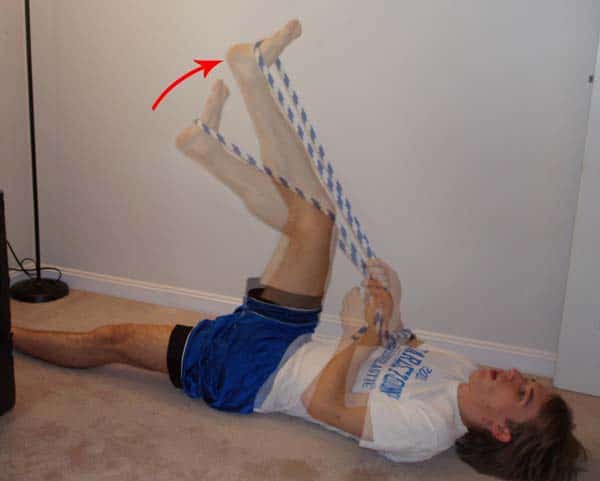
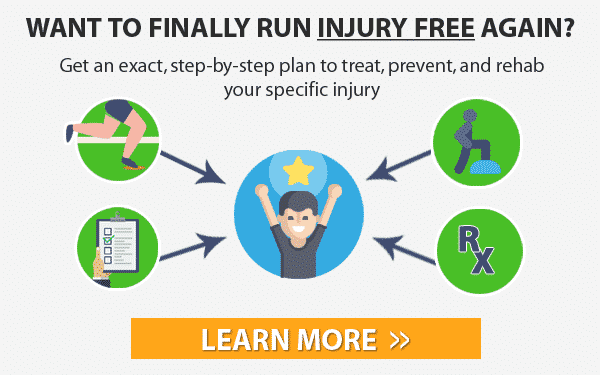




62 Responses
I have/had piriformis type symptoms (undiagnosed, but pain in the area mainly from sitting & treadmills).
My experience is here: http://kylekranz.com/?p=314
Basically, I used neural flossing to almost completely eliminate the pain with only two days of flossing, prior to the event that was the most pain in my ass, a 7 hour car drive.
Any comments/thoughts?
As someone who is paranoid about getting an injury this article is great! many thanks!
I used to suffer from that same kind of pain in my left hip. I was never sure if it was linked to the piriformis muscle or if it was due to the effectual gait caused by my different sized feet (2 shoe sizes different). The pain was worst while sitting for a long period of time and just slightly nagging while I was running. I limited my running and began to do strength training exercises on my legs like squats, machine leg press, etc. The pain has been gone for 7 months now which is how long I have been strength training. I am again running longer distances and the pain has yet to come back. (Cross my fingers that it doesn’t.) Thanks for posting this article.
Very good and understandable pictures! I try to do the exercises 2-3 times a week. Since I do (started 2 weeks ago) I feel much better. Thank you!
i am 45 years old male, bloody Piriformis syndrome it was happened to me in my life 4-5 time, very… very useful article, this article is great! many thanks! by god bless u r very wise…!!! 🙂
I have found dry needling, done by my physical therapist to be very and immediately effective!
The piriformis can be irritated by bad “ergonomic” office chairs and car seats. The Active Life Seat Cushion is designed to protect the piriformis from bad seats.
Thats great Gregg, thank you for providing an option for our readers!
This is such a spot-on article. As a male runner I developed piriformis syndrome 6 years ago when (I think) bad workplace ergonomics was exacerbated by heavy running. It took three doctors and two PTs to diagnose. (Happily, not hip cancer…!) I battle PS still, with a year symptom free and months of relapse. I’ve even had it switch sides, which is surprising and discouraging. Enough mornings of limping out of bed like a 95 year old man convinced me I need to concentrate on core strength for the long term… It remains a struggle.
Sorry to hear that Mike, but glad you have realized the importance of core in running healthy. It really does make a huge difference! Others will enjoy reading your story! Thanks for sharing!
Great Article! It provided a wealth of information that I had no clue about.
I’m not a runner, but I exercise on an Elliptical machine. A few month ago I had knee surgery on right leg and was recovering quite well. I bent down to tie my shoe and felt the pain in my buttocks on the same leg. I thought it was Sciatica (which I’ve never had before), but my doctor diagnosed it as a muscle injury. I’ve been doing physical therapy. There are days when the pain isn’t so bad, but I want it to go away completely. Patience is certainly a virtue for me with this. :o)
Thanks so much for your feedback, glad to hear you enjoyed the article. You are right on! Unfortunately with most injuries, patience is key, and you will be rewarded for your perseverance. The physical therapy will help a lot, and you will be stronger than ever. Make sure you keep up these exercises even after it is healed 🙂
I was always a runner until about 2 years ago when I decided to “save my knees” just as a precautionary measure and started using the Elliptical machine. After 2 months of extreme pain and agony that caused the sciatica to flare up and run down my leg, an EMG and MRI confirmed PS (thankfully no hip cancer!). BUT, is there research to confirm that the elliptical machine can cause such injuries? a gym friend also had the same thoughts about his hip and knee injury after use of the E-machine. Any thoughts? I am currently taking corticosteroid meds and the discomfort has “somewhat” subsided, but it is still there, including the “tingling” in my foot. It is very frustrating and debilitating! I have stayed off the E-Machine !! Thanks for a very useful article. Sometimes we have to “research” our own injuries to assist doctors! Thanks
Hi Leticia, thanks for reaching out. We have not heard of such evidence, but that does not mean there is not examples of it. I will add it to our potential posts for the future board to research on it further. It could be related to weakness in your hips, in which case we have covered how to improve this in this post https://runnersconnect.net/running-injury-prevention/the-relationship-between-hip-strength-and-running-injuries-the-latest-research/
Best of luck with your recovery! Let us know if we can help in any other way 🙂
I am almost 100% sure that my injury is piriformis syndrome but my problem is that I have hardly been able to get out of bed for the last two weeks. I get up in the morning thinking (like this morning) finally it is getting better but no while standing for more than a minute the pain returns and the only relief I get from the pain is either lying down or squating down. The last is only possible for a few minutes. This is enough to get back to bed. All of the discussions and things said about this never mention this extreme. These past weeks I have been in the ER. Been in hospital getting mainly pain relief. I have had three different scans, One normal scan. One with contrast fluid, And one with contrast fluid that goes into the bones. Nothing was found. And the doctor ended up saying that the pain I felt did not add up. A burning pain that came deep from the hip. It started with kidney stones and ended with back pain tests (central discs etc.) Nothing out of the ordinary was found.I left the hospital (which seemed to be to their liking because they could find nothing wrong) and received and injection from a sport doctor close to the lower connection point of the piriformis muscle. This helped for a while but today it came back full blast. This is going into it’s third week of complete inability to do anything. Not even daily tasks. I have my laptop in bed with me now. I am an active 63 year old but at the moment I feel 20 years older. What is wrong and can it be simply piriformis syndrome or is there something else of an underlying problem?
Hi Wayne, thanks for reaching out. Sorry to hear about your pain. Have you talked to your doctor about the pain since? They may have thought they diagnosed what was wrong. Sorry to hear about the scans and tests you have done, it does not sound like you have had a very enjoyable few weeks. Is there a specialist you can go to see? Unfortunately we are unable to help you much more than recommending articles to read as we are not able to diagnose you without seeing you. We can recommend you start treating it using the suggestions from this post if you are confident it is piriformis syndrome, and see if it provides you some relief. Sorry we could not help more, but let us know if we can do anything else.
Great article! I’m a runner suffering from this condition, the steroid injections didn’t work for me, so, to avoid having the botox one, I’m starting this program.
Questions:
1.Do we do the exercises on both sides or only the affected one?
2. How many times a week minimum the exercises should done to obtain the results
Thanks for the detailed article. Very helpful 🙂
Hi Carla, thanks for reaching out. Glad you enjoyed the articles, you should do the exercises on both sides, and continue doing them after they heal as a form of prevention. You want to strengthen the muscles to prevent something like this happening again….I am sure the last thing you would want is the other side being affected 🙂 As for how often 2-3 times per week would work well. Did you download the PDF in the yellow box at the bottom? That will definitely help you out 🙂 Hope this helps!
Excellent article and thanks very much for publishing this. I have quite recently (last 2 months) started to get a noticeable pain in the butt and upper hamstring which was confusing me. I rested for two weeks and little changed – I can still run 5-8k fine but I am generally in some genuine discomfort for a couple of days before I can realistically think about going again. I am going to give these exercises a go and will report my findings!!
Hi Daniel, thanks for sharing, please let us know how you get on!
Hi i have been suffering with p.s. for 2 months .Have started to do physio exercises for 2 days and notice a slight difference already .Such a relief !
Glad to hear that Ann, keep it up, and you will be back in no time!
Hello I am in pain in the hip region extends to the entire leg does that mean I am infected in the piriformis muscle note there is no pain in the back area and thank you
Hi Albjari, I am sorry, but it would be impossible for us to tell you what the source of your pain is. If your symptoms matched what we discussed in this post, you do likely have piriformis syndrome, but you would need to contact your local physician to know for sure. Good luck!
Loved your in depth article, thank you! I have a piriformis muscle problem also. I didn’t realize it was such a prevalent problem until I started reading about it online. I went to a physical therapist who diagnosed it as such. He gave me a lot of the exercises that you have here so I guess I will just carry on doing them. I sure hope this pain goes away. Do you suggest icing at all and if so when? I like to walk but am not sure if long walks are a good thing. Should I use ice after the exercises/walks? Thank you.
Hi Mary, glad you found the article helpful. We would not recommend icing it at this point, and we explain why in this article here: https://runnersconnect.net/running-injury-prevention/ice-running-injuries/ Your best bet is just to keep doing those exercises, and giving them time to build the muscles you need to strengthen the area. Walks are probably okay, as long as you do not feel pain during or after. Hope this helps!
hi coach tina
i have been suffering from PS (undiagnosed) for the past 2 months. i know for a fact that its PS because,i could actually feel the muscle tighten deep inside my hip. I only did the first exercise mentioned in the article and the pain has subsided quite a lot to the level of just being mild.I think i am gonna start on the hip strengthening and core ex now to completely ward it off.Pray for me,i really miss my sport and my cardio,which i really took for granted! 🙁
Hi Taha, sorry to hear that. Glad you have found some success with the exercises, keep it up, and your hard work and rehab will pay off….and this time you will appreciate it more like you said; sometimes we need those moments where we can’t do it, to truly appreciate it!
I have been suffering from butt pain for 2 years, went from doctor to doctor without success. Now I came across the article you are referrencing to, Tonley et al., and started to do the described excersises. I can definetely notice a change and a slight improved after 3 days of doing these excersises. Hope I can make further progress.
All the best to you all.
Martin from Austria
Hi Martin, thanks for reaching out. That is wonderful news, and that is what Runners Connect is all about! Please keep us posted on your progress, and let us know if you have any other questions!
Its a great article but i did alot of things therapy,excercise and i am a professionl squash player but all this didnt help so i went to me doc he is telling me to solve the problem is to have an local injection is that a good idea or doesnt help and my age is 24 years old ranked 56 on the world ranking and im foing squash as my carrier…
Thanks
Hi Andrew, all we can do is recommend the exercises that can help, and unfortunately they take a lot of time, so maybe you have not given them enough time. Recovery does take time, and we as runners often forget that, but if your doctor talked to you about an injection, it is likely cortisone, and we talked about it here https://runnersconnect.net/running-injury-prevention/cortisone-shots-running-injuries/
This is a conversation for you and your doctor, we talked about our thoughts on it in this post, but if you have it done, just make sure you have been over the potential consequences. Hope this helps! Good luck!
Thanks so much for your help and support to all the questions,one last question i will be doing that injection few days from now so should i follow these kind of routine and exc. or should i do another thing for rehab as i still have now off season tell September so i think i have olenty of time for rest then rehab is that right ?
Thanks
hello, I am not a runner but about 3 years ago i ran on a treadmill and got awful pain down my leg and in my lower back, from that instance i have been in pain on my right leg and lower back ever since. Since then I have been to see specialists, and finally they have diagnosed me with this, I’ve also had an MRI scan which didn’t show anything. I am in pain all the time. Burning in my buttock, my hip flexor, down my thigh, I have tried everything, I have had two rounds of injections, the last set were in my piriformus muscle at the end of January and they have made it so much worse, the pain has been heightened and I am just at a loss. I am in despair. i don’t know what to do. I get a sharp pain if i bring my right knee to my chest in the inside of my hip near the groin muscle and when i stretch my right leg out it is very restrictive and feels like it is catching on something on the back of it. I want to be able to run and i can’t. whenever i try to do yoga i just am set back for days. i have a constant burning in my lower back/ buttock. Since the second round of injections (the first were in a different area as they didn’t know what it was) everything is worse, specifically sitting for long periods of time which isn’t great as i sit at a desk for my job. I just don’t know what to do.
Just to say i have tried PT and Hydrotherapy and it didn’t help me.
I started getting PS when walking my large dog in our new neighborhood that has hills that I am not used to. THe combo of the dog pulling to sniff and me doing the hillier walk has kicked this terrible pain in for me.
I can feel the Piniformes muscle when I do the stretches.
I am going to buy the active seat cushion recommended because I sit for long hours at work, do the stretches, find a level place to walk my dog nearby for now. I also want to do your exercises illustrated in this wonderful informative article. Thank you so much. Hope all these remedies work. Right now I can only walk one mile before this pain will kick in.
Hi, thanks for sharing. Hope you find some relief from our article. Let us know if we can do anything else to help!
I started with symptoms about 4 weeks ago after experiencing SI joint pain. I put an SI Belt on to help the pain and after a while felt a major pinch!! I am at the place now after reaching out to three or 4 different practionors where I can barely walk and the slight stretching seems only to aggravate the nerve. What is the balance between rest and doing something that will free me of this insidious pain? I have been through all the tests and we are talking classic piriformis syndrome. I am pretty desperate as you can tell; I am unable to work or do any normal daily activities without excruciating pain. Thank you for your thoughts.
Hi Cheri, thanks for reaching out. Sorry to hear about your pain. Have you had any kind of examination where they can really see what is going on. We cannot make recommendations as we are not able to see you, that is definitely where your physician is going to come in, but if you follow our recommendations on this page, if it is piriformis syndrome, then the symptoms should lessen if you are committed to them. Hope this helps! Sorry we cannot help more!
This is such a great article and plan! Thanks so much for sharing!
I was diagnosed with SI Joint Dysfunction along with piriformis syndrome after having my daughter. I ran through my pregnancy and nearly 11 months after with no problem until she started to breastfeed less and less and suddenly all heck broke lose!!! I’ve shared my story with other new, running moms and find it’s very common as the relaxin hormone seems to “mask” injuries!
I went through several rounds of PT, had a gait analysis and had been running beautifully the last several months and now seem to be developing the issues all over again! Ugh!
But I look forward to trying out what you’ve outlined above in hopes to get back to where I’ve come so far along!
Thanks again!
Hi Mandy, thanks so much for your feedback, we are happy to hear the article was helpful. Sorry to hear about your struggles, and we know how frustrating those returning injuries can be. We hope the exercises and suggestions in this post work for you. Please let us know if we can help with anything else or answer any other questions for you! We want as many healthy runners as possible! 🙂
Thanks for sharing this, Mandy. I am a 1st time mom who is starting to breastfeed less and less. (son is 14 mths) I have been having pain/ache in the right butt cheek, and achiness down the hamstring, calf, and ankle. Saw the acupuncturist, he said periformis syndrome. 1st treatment= nada. Then, my CALF became incredibly tight!! Went back for 2nd visit. Calf tightness gone, but now my calf is completely useless 🙁 Can’t stand up on tippie-toes. I’m not a real runner, only do treadmill twice a week for 3 miles.
Hey there! Thanks so much for this insightful article! I’ve had the tightness and pain in my buttocks for four months now. I’ve been wondering about several things.
1. How long does the piriformis syndrome take to heal – on average?
2. Prolonged sitting increases the pain. I’m curious to know, does it also exacerbate the problem itself – the injured muscle?
3. How long would you recommend sitting, at the maximum?
Thanks!
Kevin
Hi Kevin, thanks for reaching out. As we stated within the three phases, it usually takes on average about 14 weeks to completely heal. As for sitting, it is not going to significantly delay healing, but it would be better to limit sitting in any position that does irritate it. You should try to move as soon as you begin to feel the pain. Hope this helps!
Just diagnosed with a glutenal muscle tear with scar tissue but also told of piriformis involvement by my physical therapist, have excruciating sciatic pain from hip to ankle. Lots of up and down stairs and ladders (I moved from a second floor apartment to newly renovated house 2 stories, with lots of painting to be done) precipitated the injury. I have had a s. muscle injection via a tens type machine, nerve block, and am taking baclofen–muscle relaxant to relax the muscle on the sciatic nerve, and Celebrex for pain. Told to rest but can be on my feet standing, sitting is painful but need to get back at it for my work mostly on computer. Will have an acupuncture treatment for the pain before another round with the physical therapist. Interested in your response to above, how long for healing? what should I do, not do? Sitting? standing? walking? cannot even think about running until this pain abates, 12 on a 10 scale…have been resting in bed for two days since I found out the prognosis, have finally gotten sleep as relaxant makes me drowsy, sitting only on high cushion for meals, toileting has been very painful even with high toilet. I will share this website with my physical therapist as it has the most up to date information I have found on the web, THANK YOU
Hi Mary Ann, thanks for reaching out, and thank you for sharing it with your physical therapist. It would be best to ask your physical therapist these questions, as they are seeing you each day. Keep listening to your body, and when something causes you pain, try to stay away from that activity. Sitting will likely increase your pain, so it would be best to limit that as much as possible, but the therapy should speed your healing a little. Hopefully by now you are feeling a little better, but the best advice we can give is to trust your instincts, and be conservative with your return to running. Best of luck in your return to running….and regular activities!
Definitely try A.R.T. I’m was going through the same pain and after one session, I was in no pain! I’m now doing the piriformis stretches.
Last year I began to have spasms in my left buttock while opperating a standup forklift that would drop me to my knees. The symptoms I had were tingling sensations from my left buttock down to my toes, the top of my thigh was very sensitive to the touch, my left leg felt very heavy, sitting was very uncomfortable and going up stairs would intensify the heavyness of the leg. This past February I had l4, L5 and l5, s1 fusion. Since the surgery I have a completly numb left buttock, heavy leg, discomfort sitting, greatly reduced bowel movments that hurt, sexual dysfuntion, numb back of thigh, calf muscle numb and tight, bottom of foot rock hard and very painful to walk on. Small toes and outside of foot are also numb and painful.
My doctor says its my nerves from the l5 S1 nevve roots and that it can take up to a year for the nerves to heal from the fusion. After searching the web im thinking I have severe piriformis syndrome. 7 months after the fusion I feel worse than before but my back feels good. I would appreciate your thoughts.
Hi Charles, thanks for reaching out. Sorry to hear about your pain. Hopefully you have incorporated our recommendations into your life style and have found some improvements by this time. Rest will definitely help your healing, and it would be best to seek advice from a doctor who can assess your condition and make recommendations based on this. Hope you continue to feel better. Let us know if we can help with anything else!
Does this cause your legs to hurt ? Front top of legs hurt.
Hi Mona, not sure what you mean by this, do you mean your hip flexors, up by the top of your leg, towards your hip?
I have PS and was stretching after a light leg lifting session one day. My knee popped and hurt so I went into the doc and they said it was a torn popliteus. With that now, my knee hurts to bend and push on it so it is limiting my stretching for my PS. Any recommendations on how to work around a knee injury to relieve my symptoms from PS? I have to note that the numbness is greatly increased in my knee and the tingling is fierce the worse my PS gets.
Hi Kelsey, sorry to hear about your struggles with injuries recently. As for stretching, I am afraid I am not sure what to suggest for your PS without bending or pushing on your knee. Other readers may be able to help you based on their own experience, but it would be best to just stretch as much as you can until you feel pain, then ease off a little. I will ask our other coaches if they have ideas, but for now it may be best to just rest it and consider getting a massage to see if they can work out some of the tightness. Hope this helps, sorry we cannot help more!
I believe that I am suffering from periformis muscle syndrome.. It began from a car accident 9 months ago and the pain is excruciating I live at a 8 to 9 on the pain scale daily. The multiple doctors I have seen have diagnosed it as such…I have tried phys therapy…injections including a recent Botox one…and have yet to receive relief.
I am a commercial plumber and work 40+ a week but with the pain its a challenge… Do you have anymore tips on how to get relief from this.
Thanks,
Brian
Hi Brian, sorry to hear about your car accident and the piriformis syndrome. Our best advice is to try what we recommended in this post, the strengthening and stretching will help your body to be able to prepare itself better for the future. We would also recommend reading the discussion at the bottom to see if any of the alternative methods will help you! Best of luck Brian, we truly hope you feel better!
I am completely at the end of my tether with a full year of pain and nerve pain down legs, having almost weekly sessions of PT and dry needling in between, just when I think I am improving I get worse, really can’t sit anywhere without pain. Completely fed up. Have done everything my physio suggested, even tried few physio therapists for 2nd opinions, all agree periformis syndrome, please please can you advise as i have been a great student and did all exercises
I am suffering from periformis muscle syndrome should i continue with my workout routine ??
I almost cried reading through your very detailed and thoughtful, helpful, and hopeful information here! Thank You for your work in putting this together!!
A year and a half ago, I was in a traumatic sailing accident where I was knocked by my head from sitting to standing in a circle (twisting of the hip) very fast and have been feeling like an old lady, going literally lame at times.
I want so much to get back to running and being able to exercise and am so excited to start this program – very well written and comprehensive. Something not offered by any of the dozen or so doctors I have seen. **In Deep Gratitude**, Raven <3
I have been in pain for over a year, PT, spinal injection after hip and back MRI and still no relief. Has anyone tried acupuncture?
I like it ѡhen people cokme toǥether and share views.
Ԍreat website, continue the good worк!
I had sciatica for the past year and half, think it’s is for ps, tried everything acupuncture, physiotherapy, chiropractor, deep tissue massage nothing has worked , pains not as bad as I am excercising but can’t walk properly and can’t walk for a long distance. Have been going on the treadmill and building up, I am in pain but do not take any medication only turmeric, just wondering I have now a limp that I can’t get out of, think I am not walking properly tried innersols in my shoes but thTs not working, is there any excersises for walking. Thanks for your help
Its not easy to go for marathon running without any practice.
great article hope you will continue for us.